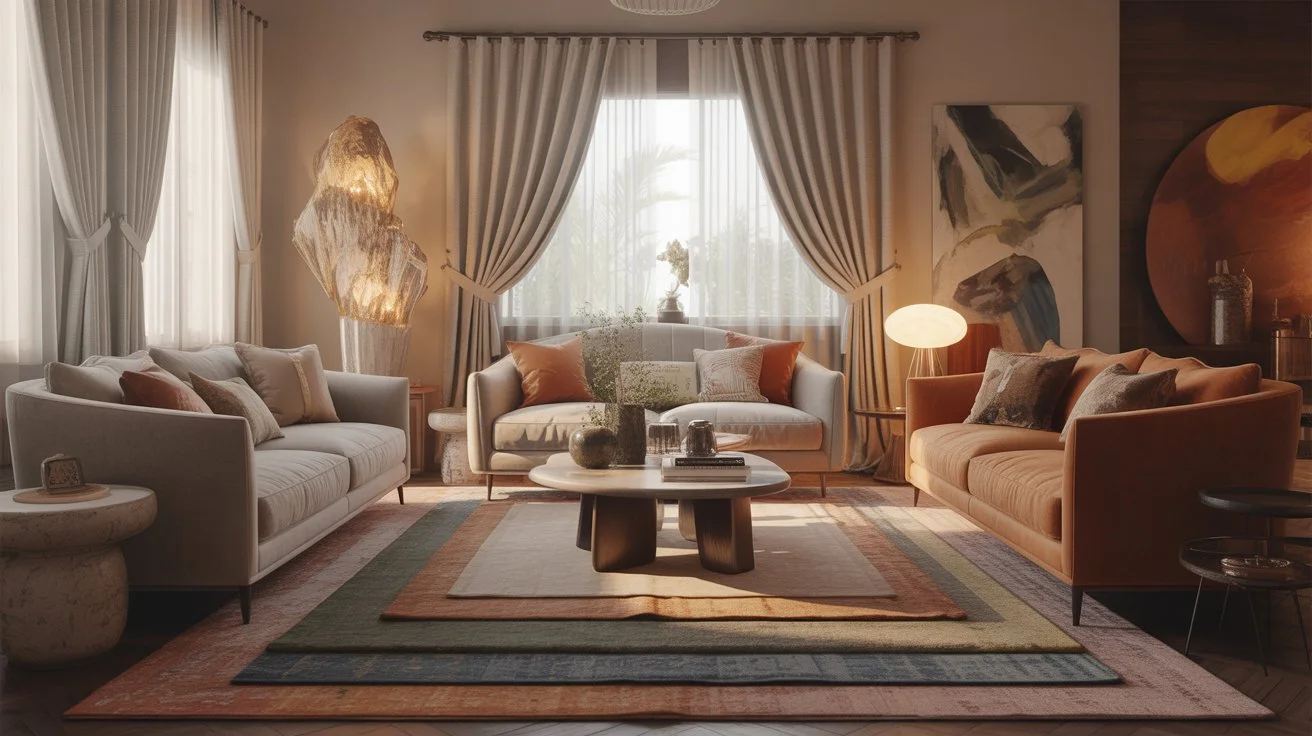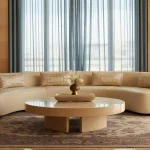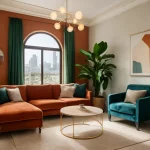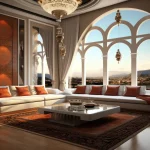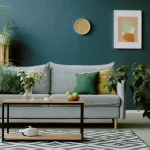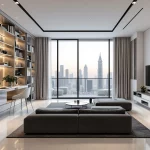The feeling is indescribable, hard to put into words when you walk into a room and it just feels…right! Right? It’s just oozing with warmth, it’s inviting and full of subtle interest. Well, that dreamlike feeling is the magic of layered interior design that you’ve experienced.
Yup, this approach is actually the secret behind those effortlessly cozy spaces that we’ve all seen in magazines and dream of for our own homes. But hang on, we hear you wondering, ‘what exactly does it mean to “layer” a room?’ You must be wondering ‘how do you master the art of mixing textures, colors, lighting and so much more without having a cluttered mess, right?
Well, you’ve stumbled upon the right place once again as we dive deep into how you can create a home that’s both balanced and oozing with personality. Take it from us, we’re the best interior design company Dubai. Let’s go!
What is Layered Interior Design?
We begin with the layered interior design definition. At its heart, layered interior decore is the intentional combination of multiple design elements required to create depth, aesthetic and warmth in a space. These elements can include textiles, colors, lighting, accessories and patterns.
Instead of relying on a single statement piece or color, you create a room’s personality via thoughtful additions, each one improving the last. This results in a space that feels special, like someone lives in that space, it feels personal and inviting instead of a cold, boring and one-dimensional space.
You know how you dress for unpredictable weather, layering is similar. Layering in design means you’re prepared for anything, a cozy night in or a lively gathering with friends or family. Every layer has a story to tell. But together, they create this harmonious, multifaceted ambiance.
Foundations of Layered Interior Decor
Let’s discuss the foundations that make for a solid layered interior decor:
Statement Pieces
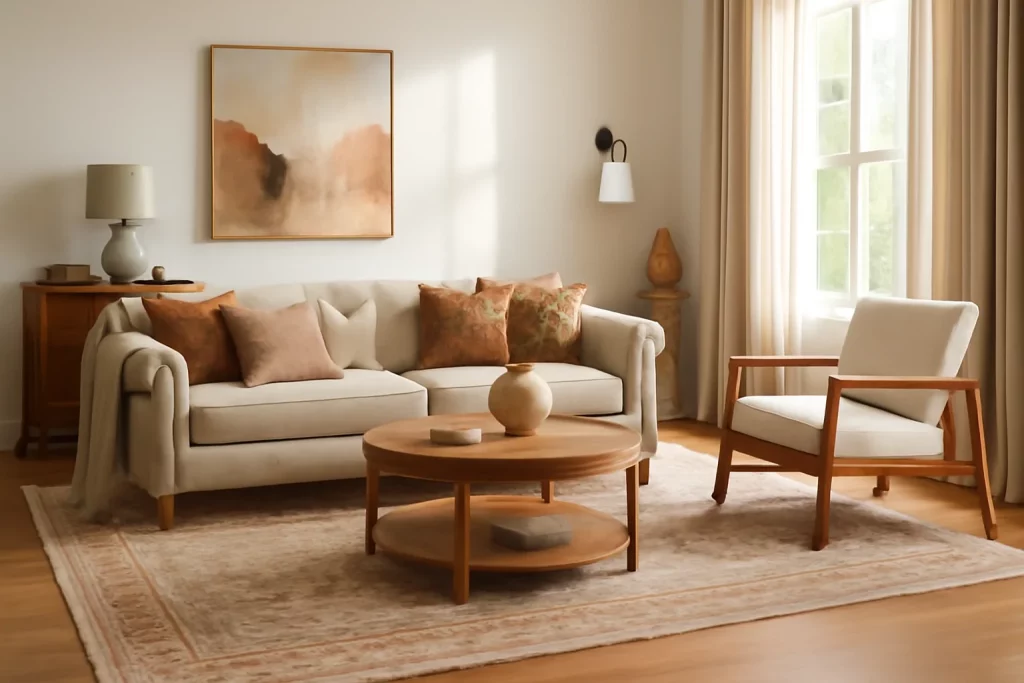
Every room must have a focal point. It could be a plush sofa, a bold art piece or even a vintage coffee table. It’s important that you start your layering process here. Then you can build out with modern colors, textures and patterns.
Layered Rugs Interior Decor
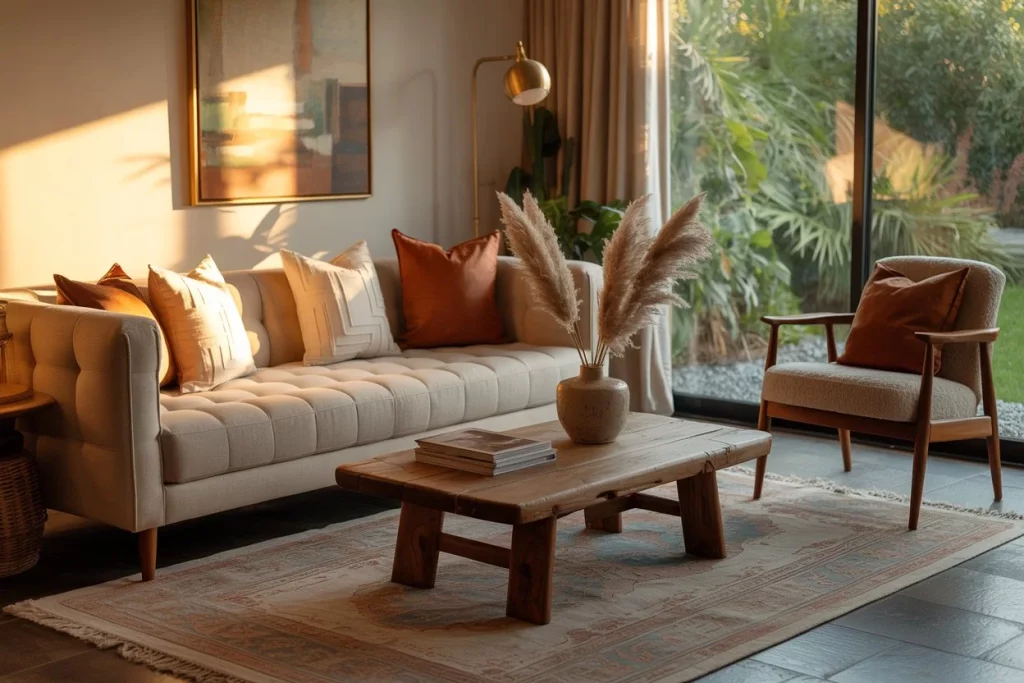
Rugs are a crucial piece of your layering process. Try placing a large, neutral rug as your base. Then, add a smaller textured or patterned rug on top of it. Now, this not only grounds your furniture, but it also sprinkles a bit of coziness and depth in the space. Layered rugs in interior design are especially effective in an open plan space that requires a bit more warmth under your feet.
Textiles & Accessories
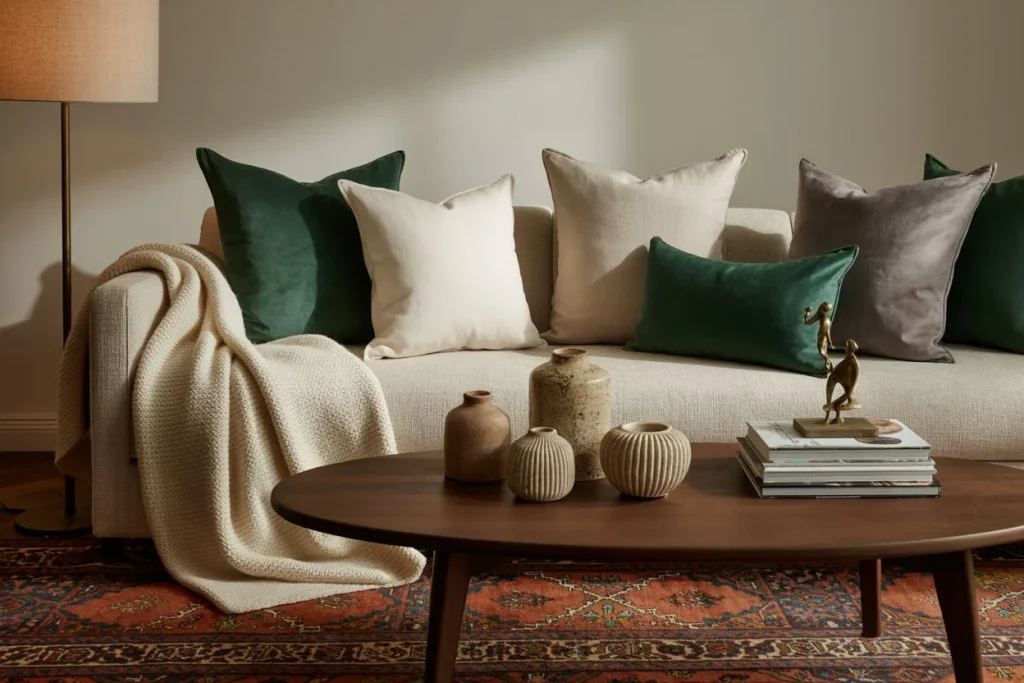
try adding pillows, throws and bedding into the space. Mixing materials for tactile experience makes it inviting and stylish at the same time. Materials like velvet with linen, chunky knits with smooth cotton might help in this regard.
Window Treatments
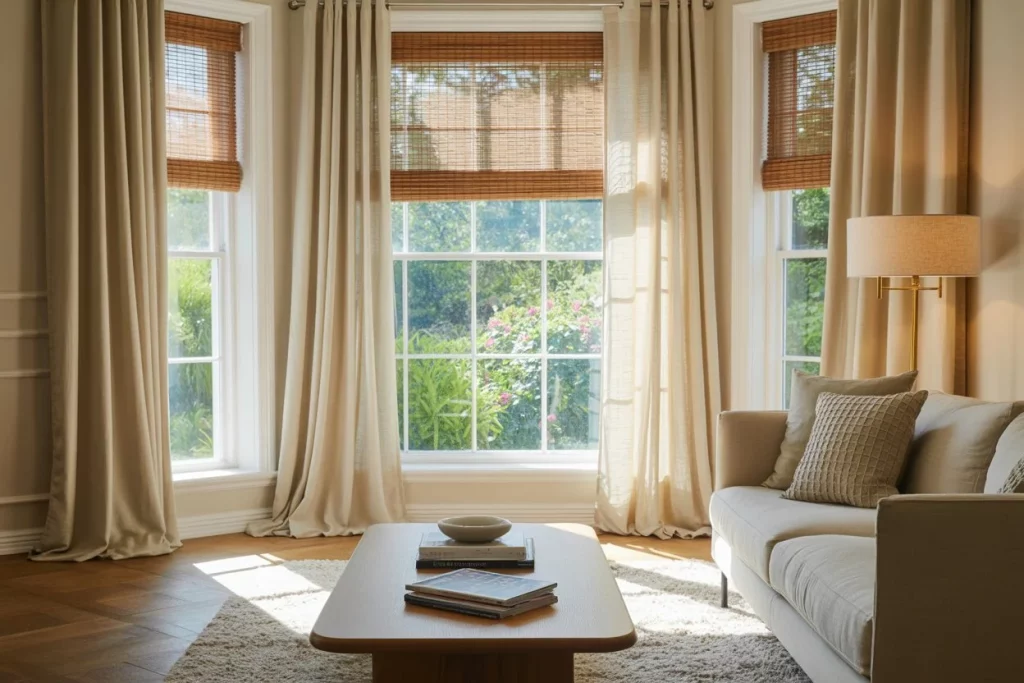
Ever thought curtains, blinds and shades offer you more than just privacy? Yes, they soften the hard edges and add another tactile layer to the space. So, select neutral colors to let the sunlight filter through inside or go bold with patterns for extra character.
Layered Lighting
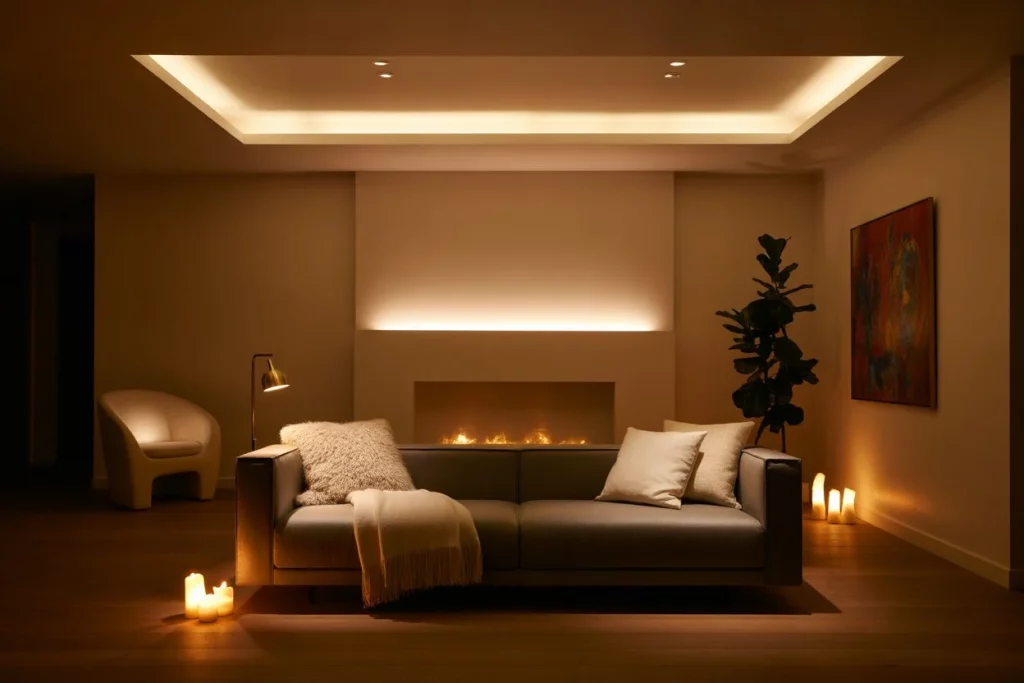
Lighting can be the deciding factor of your space. Layered lighting means blending ambient (overhead), task (reading lamps) and accent (wall sconces, candles) lighting to create depth and mood. This interplay of light across these layers not just brightens up the room but also narrates a story. It shapes the way you think of your space as a home.
Art & Décor
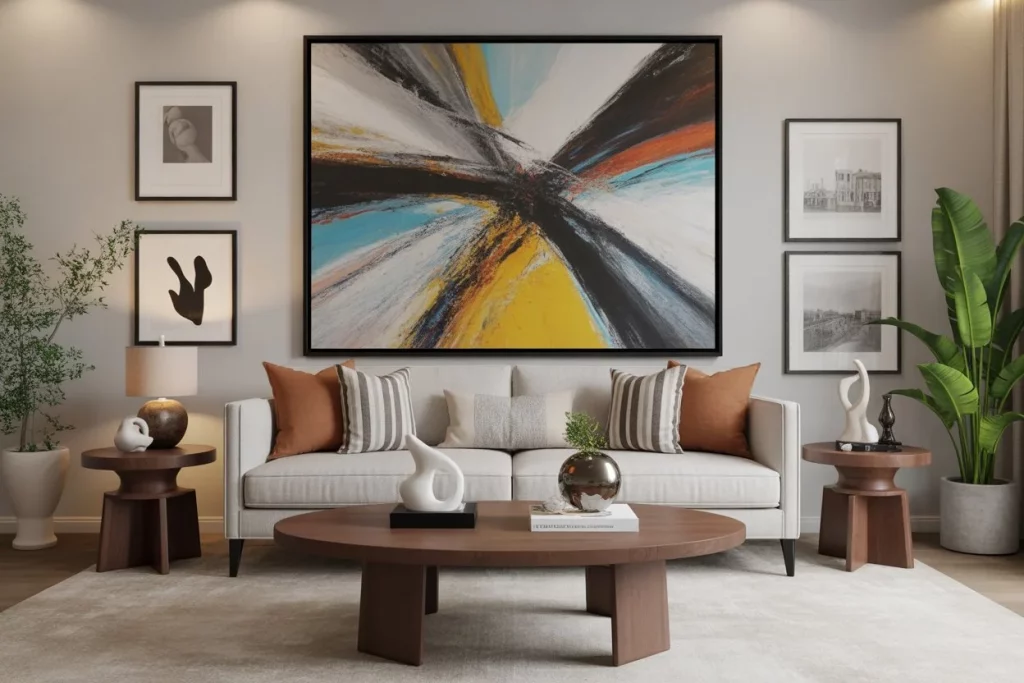
try to mix large art pieces with smaller ones. Gallery walls, sculptural objects and plants all add their magic to the layered effect. Just remember to leave some breathing room so your favorite pieces may shine in their own glory.
Layered Dimensions Interior Decor Add Depth
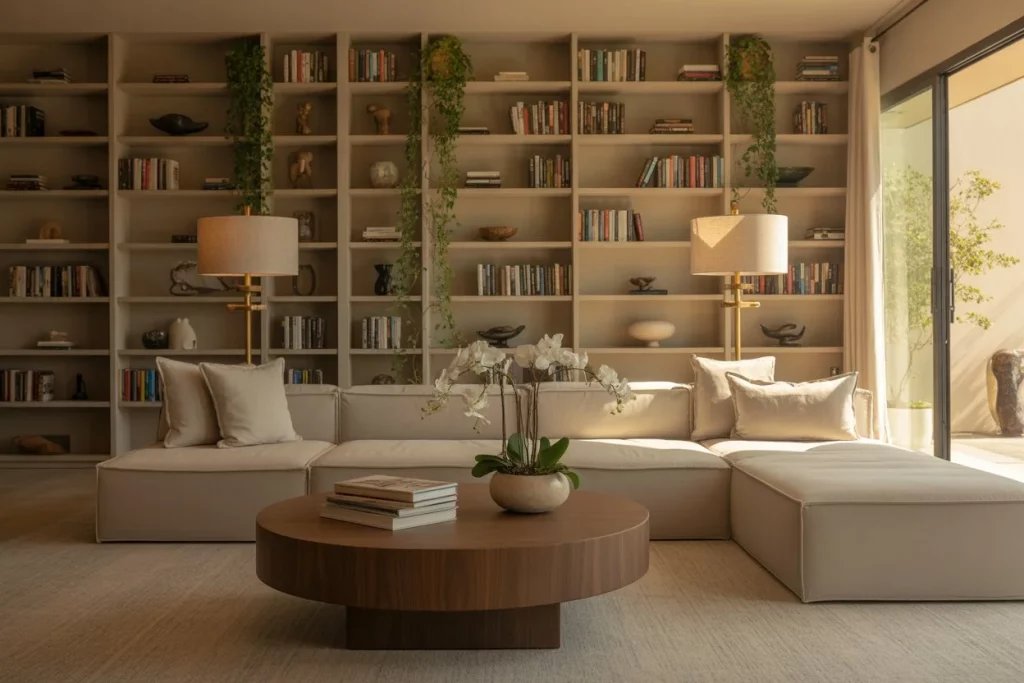
One of the hallmarks of layered design is its ability to create depth and dimension in a space. This is where layered dimensions design comes in. You must arrange furniture, art and accessories carefully, at various heights and depths. What it does is the eye is guided through the space, making even compact rooms feel expansive and full of depth.
A living room that is nicely layered might include a low-slung sofa, a mid-height coffee table, large bookshelves and hanging pendant lights. All these features work well together and create a visual movement of intrigue and elegance.
Layered Italian Interior Decoration is Timeless Elegance
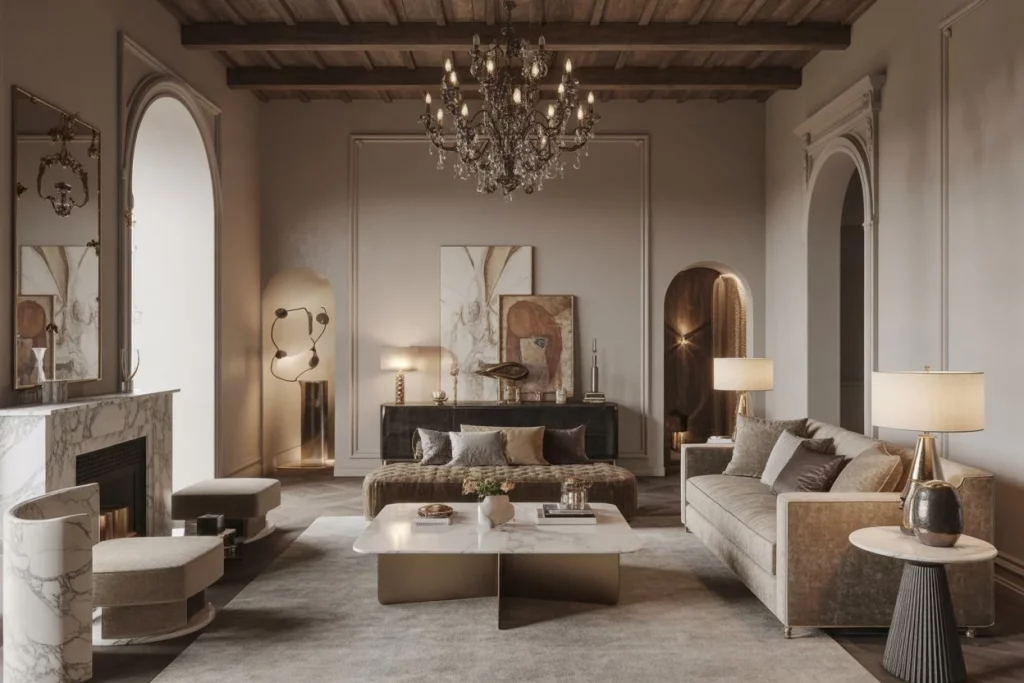
If you’re a fan of Old World charm and effortless sophistication, then layered Italian interior decoration must be your choice. Italian interiors are the best that blend textures. These may include rustic wood beams, cool marble, velvet upholstery and silk drapes. Now, layering here means mixing the old with the new, the rough with the refined.
Don’t be discouraged to experiment by pairing a plush wool throw with glossy silk pillows. Don’t be afraid to combine ornate chandeliers with sleek modern lamps for a look that’s stylish, grounded and yet oozing luxury.
Tips for Mastering Layered Interior Decor
Follow these tips to be an expert at layered interior decor:
- Try combining soft and hard surfaces, shiny and matte finishes. Try mixing textures and materials. A velvet sofa can be paired with a leather ottoman, or a coffee table made of glass placed on a woven jute rug.
- Layering isn’t always about what you can use but how you can arrange it. Try using tall floor lamps, medium-heighted side tables and low poufs to create a sense of movement, depth and balance. Try varying heights and scales.
- Have you tried playing with patterns and colors? Try experimenting stripes with florals. Keep your color palette cohesive. Layering patterns add energy but if you have too many colors, they might clash and cancel each other, leading to chaotic vibes.
- Let’s say your ceilings are painted with a subtle hue or adorned with beams. And your floors are layered with rugs. Well, this can transform your space from the top down and bottom up.
The Powerful of Layered Interior Home Decor
Let’s bring it all together. Layered interior styling isn’t about following strict formulas, it’s about creating a home that feels like you. By thoughtfully and carefully combining elements and paying special attention to details like layered lighting in interior design, layered rugs interior design and layered dimensions interior design, you will create spaces that are both beautiful and deeply personal. Whether you are inspired by the tactile opulence of layered Italian interior design or the cozy, eclectic vibe of a modern cottage. Always remember, the best interiors are built one layer at a time. So start with your statement piece, add a rug (or two), experiment with lighting and let your style unfold. Try contacting the best residential interior design Dubai and your home will thank you if you apply this guide, thoughtfully.
FAQs
Layering in interior decor is the artful combination of many features. These elements can include textiles, lighting accessories and colors. And they create warmth, depth and aesthetics. It’s about building a room’s personality that results in a space that feels cozy, balanced and uniquely yours.
The 3-5-7 rule is a guide for arranging décor in odd numbers, which is naturally more pleasing to the eye. Groupings of 3, 5 or even 7 objects (like vases or candles) create a sense of balance and aesthetic without feeling too symmetrical or staged.
The 7 layers of interior design usually include architecture, flooring, wall treatments, upholstered furniture, accent furniture, textiles and finally, art accessories. If you master these layers, you can make sure your room feels complete and carefully created.
This rule helps in balancing color in a room. 70% should be the dominant color (walls, large rugs), 20% a secondary color (upholstery, curtains) and 10% an accent color (pillows, art). It’s a simple formula for creating harmony and avoiding an overload of color.
The 2/3 (two-third) rule suggests that items like rugs, artwork or furniture should be about two-thirds the size of the surface or wall they’re placed on. This creates pleasing proportions and makes sure pieces feel intentional and not just random.
No. Not quite. Both can add interest, but layering is about combining many elements (colors, patterns, objects). And texturing focuses specifically on tactile surfaces. You can layer textures, but you can also layer colors, lighting and more.
The 60/20 rule suggests that 8-% of your space should be foundational (neutral, classic or functional), while 20% can be bold, trendy or even personal. This keeps your design grounded but still allows for personality and fun.
The 3 F’s of interior architecture are ‘Function’, ‘Flow’ and ‘Focal Point’. Every space should serve its purpose (function), allow easy movement (flow) and have a clear area of interest (focal point).
The 357 rule is about grouping décor in odd numbers. 3, 5 or 7 for a natural, visually appealing arrangement.

